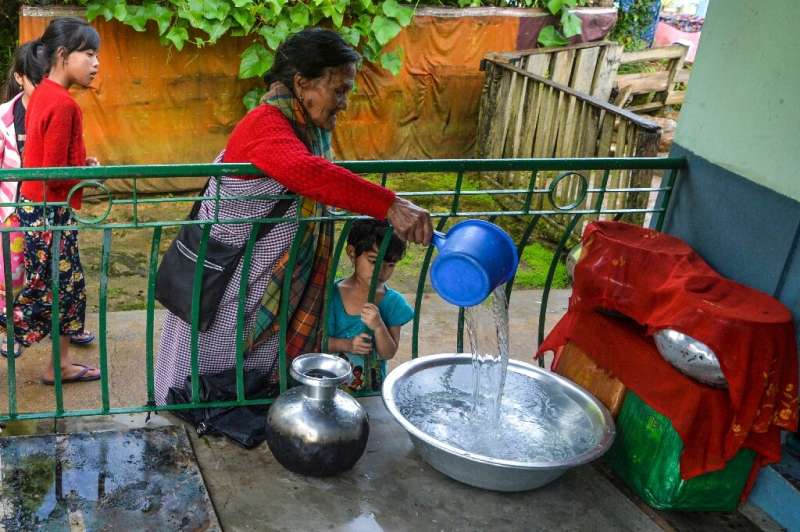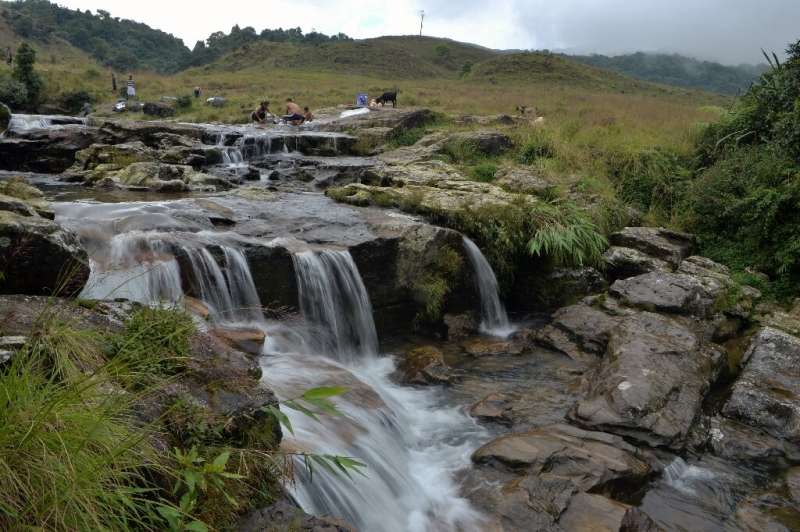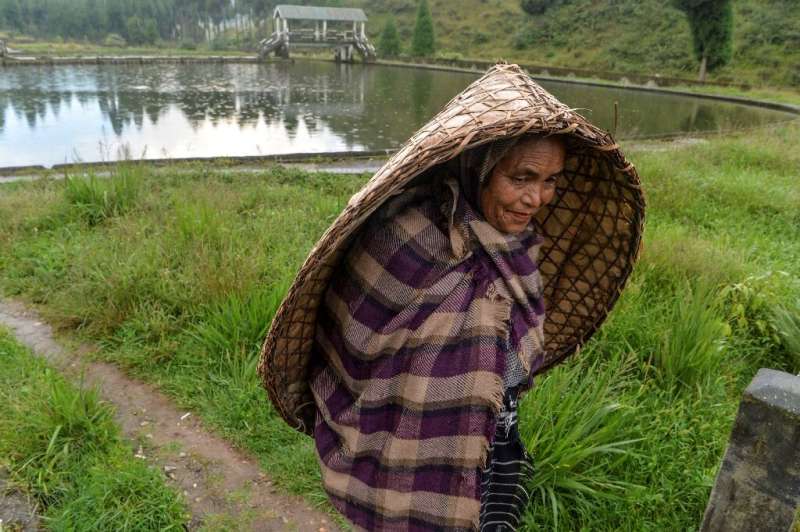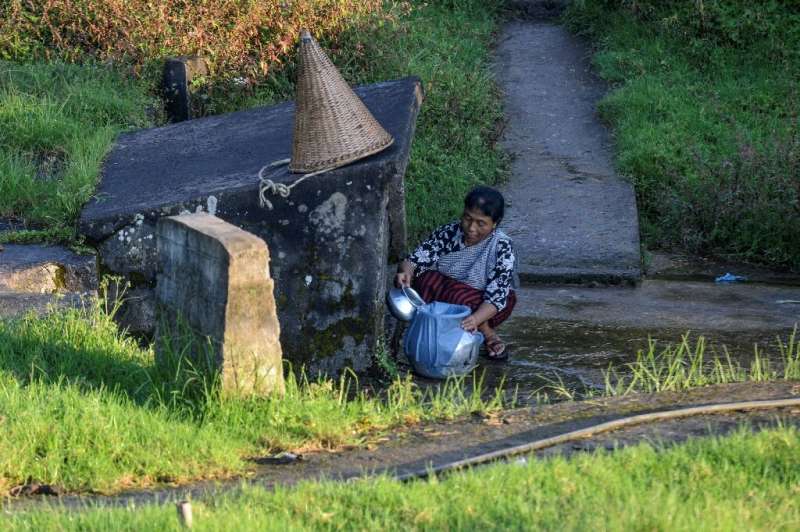Dispatches from the wettest place on earth

Every drop of rain water trickling down Tyllod Khongwir's rusty tin roof and into her house is collected—even though she lives in one of the wettest places on earth.
The widowed mother-of-eight lives in Meghalaya, a remote state in India's northeast, where heavy rainfall no longer equates to an abundance of water.
It was not always like this.
"We had plenty of water throughout the year earlier because there were a lot of natural springs and it rained so much," Khongwir recalls.
"Now we collect whatever we can when it rains and save it for later," she says.
Today the natural springs and aquifers of the area are dwindling—so residents must save what they can, when they can, and by whatever means they can.
Meghalaya is India in microcosm, a stark example of its dual conundrum of having both too much and too little water.
Climate change is bringing erratic weather—flood and drought, sometimes in the same area.
Scientists say the monsoons now bring less rain in total, while the demand for water increases as the population, economy, and industry grows.
The rains come in increasingly violent deluges, but with little storage options, most of the rain is lost as run-off.
Last July, nearly a thousand people were killed as floods swept through the eastern Indian states of Bihar, West Bengal and Assam, as well as in neighbouring Nepal and Bangladesh.

At the same time large swathes of southern and western India faced severe drought. Chennai officials declared it had reached 'Day Zero' as the taps ran dry: special water trucks were brought in, while residents were forced to queue for handouts or deal with escalating prices from blackmarket gangs.
Some 163 million people in India, which is set to become the world's most populous nation in the next eight years, live without access to clean water according to WaterAid, and the situation is set to deteriorate.
'Dire consequences'
A report by the World Resources Institute warned the nation is facing extremely high water stress, putting the health of hundreds of millions, as well as national development, at risk.
"Even small dry shocks –- which are set to increase due to climate change -– can produce dire consequences," the think-tank said in a report released last year.
Deforestation and rapid unplanned urbanisation have compounded India's woes, with floods becoming massive and drought persisting for longer periods.
"The destruction of forests affects weather patterns locally and globally both in the short and long term," said Harjeet Singh, the global lead on climate change at ActionAid International.
"Forests absorb heat-trapping carbon dioxide, helping to stabilise the planet's climate. So deforestation means that more greenhouse gases are left in the atmosphere, heating up and disrupting the earth's weather patterns."

Meghalaya is among the greenest states in India but it has rapidly lost its rich rainforests over the last few decades.
According to the Global Forest Watch, the state has seen a 10 percent decrease in tree cover equivalent to 65.5Mt of CO2 emissions since 2000.
Meghalaya is also home to two of the wettest places on earth.
Khongwir's village, Cherrapunji, once held the record—at its wettest, in 1861, it received almost 23 metres (75 feet) in a year.
Now it registers around half that.
When the rains come, the mother-of-eight uses old pipes and funnels to harvest all the water she can—her home dotted with musty containers, covered with cotton to stop insects and contaminants.
"The water in our springs is decreasing day by day. Earlier we didn't care but now we have realised that every drop counts," Khongwir explains.
Neighbouring Mawsynram village is now officially recognised as the wettest place on earth with close to 12m of rain falling each year, but even there villagers say everything is changing.

"We never learnt to save water because there was so much water all around," says Miralin Kharchandy, a local school principal, adding: "This year we just had two weeks of very heavy rain."
Meghalaya authorities are now working with communities to build rainwater reservoirs for each area.
Headman Tarcisius Dhkar explains: "Since the villagers play a role in building and maintaining these reservoirs, they feel a sense of ownership. They use water more responsibly."
© 2020 AFP


















